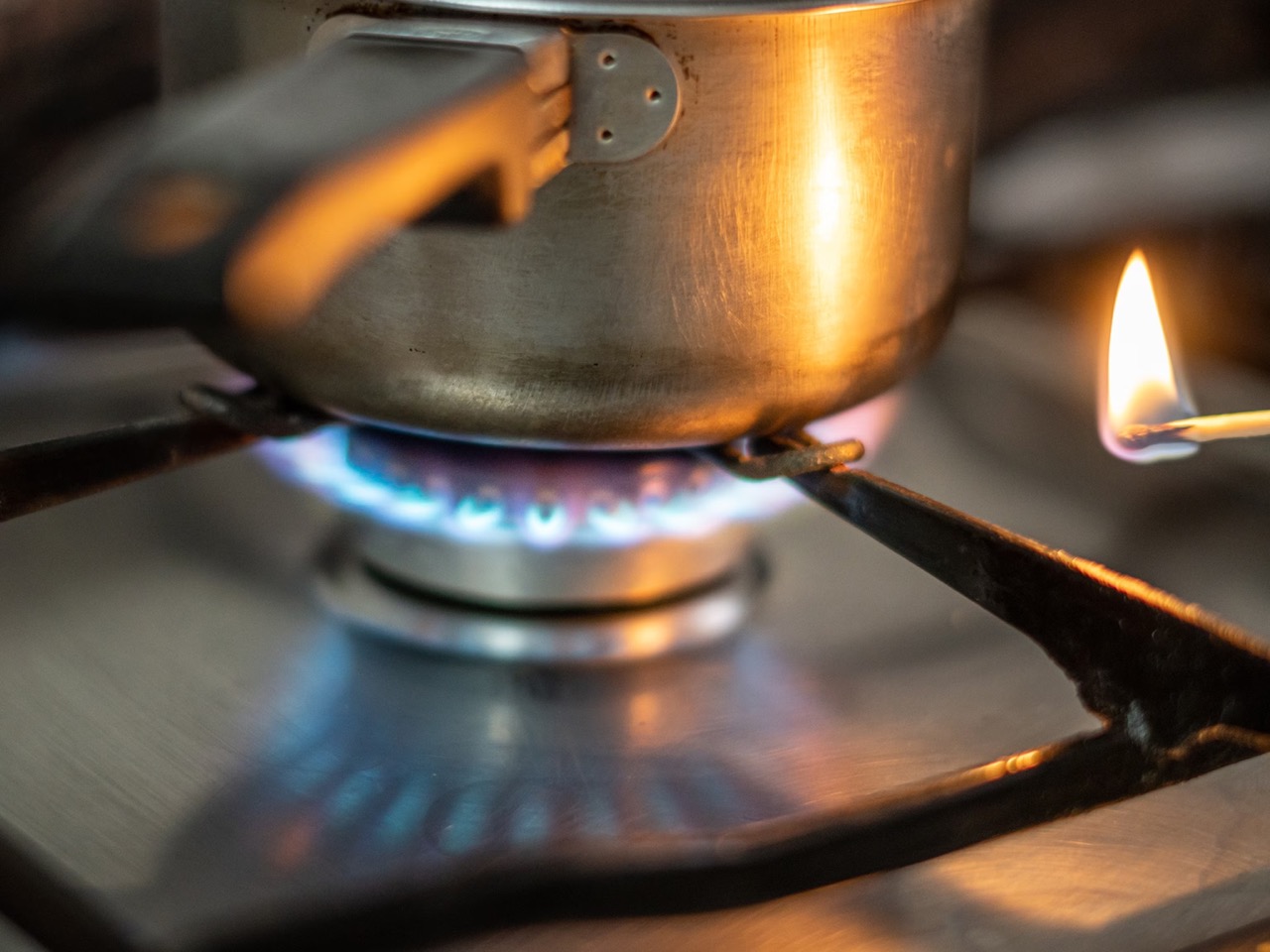

Articles
Why Is My Stove Top Smoking
Modified: October 20, 2024
Learn why your stove top is smoking with these informative articles. Find solutions and tips to fix the issue and prevent further problems.
(Many of the links in this article redirect to a specific reviewed product. Your purchase of these products through affiliate links helps to generate commission for Storables.com, at no extra cost. Learn more)
Introduction
There’s nothing more frustrating than preparing a delicious meal, only to have your stove top start smoking. Not only does it create an unpleasant cooking experience, but it can also be a sign of potential issues with your stove. Understanding the common causes of stove top smoking and how to address them is essential for maintaining a safe and efficient kitchen environment.
In this article, we will explore some of the most common reasons why your stove top may be smoking and provide practical solutions to stop the smoke. Whether you’re a seasoned chef or an occasional cook, these tips will help you troubleshoot and resolve any smoke-related issues.
Key Takeaways:
- Regularly cleaning your stove top, using proper cookware, and maintaining heating elements can prevent smoke and ensure a safe and enjoyable cooking experience.
- Avoiding overheating, inspecting electrical connections, and addressing burned-on food promptly are essential in eliminating smoke and maintaining a clean and safe kitchen environment.
Read more: Why Are My Stove Burners Smoking
Common Causes of Stove Top Smoking
There are several potential reasons why your stove top may be smoking. Understanding these common causes can help you pinpoint the issue and take appropriate steps to resolve it. Let’s explore them:
- Grease Buildup: Over time, grease and food particles can accumulate on the stove top. When exposed to high heat, these residues can start smoking, causing an unpleasant odor and potentially hazardous conditions.
- Food Residue: Similar to grease buildup, leftover food residue on the stove top can also start smoking when heated. It’s important to regularly clean your stove top after each use to prevent the buildup of food particles.
- Pans and Utensils: Using the wrong type of cookware or utensils can lead to smoke on your stove top. Non-stick pans with damaged surfaces or plastic utensils that come in contact with a hot burner can release smoke and potentially pose a fire hazard.
- Improper Heating Elements: Faulty or malfunctioning heating elements can cause smoke to emit from your stove top. These elements may be damaged or not functioning properly, resulting in uneven heat distribution and smoke generation.
- Burned-on Food: If food spills onto the stove top and isn’t cleaned promptly, it can burn onto the surface. When you heat the stove, this burned-on food can produce smoke and an unpleasant odor.
- Electrical Malfunction: In some cases, an electrical malfunction within the stove can cause smoke to form on the cooking surface. This could be due to faulty wiring, damaged components, or a malfunctioning control panel. It’s crucial to address any electrical issues promptly to prevent further damage and risks.
- Overheating: Operating your stove at excessively high temperatures can lead to smoke and even potential fire hazards. It’s important to set the appropriate heat level for your cooking needs and avoid overheating the stove top.
Now that you have a better understanding of the common causes of stove top smoking, let’s move on to the solutions to stop the smoke and keep your stove top functioning optimally.
Grease Buildup
One of the most common causes of stove top smoking is grease buildup. Over time, grease from cooking can accumulate on the surface of your stove top and surrounding areas. When heated, this grease can start to smoke, creating an unpleasant cooking experience and potentially posing a fire hazard.
To address grease buildup and stop the smoke on your stove top, follow these steps:
- Clean Regularly: It’s important to clean your stove top regularly to prevent the buildup of grease. After each cooking session, allow the stove top to cool down and then wipe it with a damp cloth or sponge. If there is stubborn grease, use a mild detergent or a mixture of baking soda and water for a deeper clean.
- Use Degreaser: In cases where grease has become stubborn and hard to remove, you can use a commercial degreaser specifically designed for kitchen surfaces. Follow the instructions on the product label and ensure adequate ventilation when using chemical cleaners.
- Focus on Burner Areas: Pay special attention to the burner areas, as grease tends to accumulate around the burners. Remove the burner grates and clean them thoroughly using a brush or sponge. Wipe the burner area with the appropriate cleaning solution, ensuring that it’s completely dry before using the stove again.
- Use a Grease Splatter Guard: To prevent grease from splattering onto the stove top while cooking, consider using a grease splatter guard. This handy kitchen accessory helps contain grease and prevents it from accumulating on the stove surface.
By regularly cleaning your stove top and following these tips, you can effectively manage grease buildup and eliminate the smoke caused by it. A clean stove top not only enhances the cooking experience but also ensures the safety of your kitchen.
Food Residue
Food residue left on your stove top can also contribute to smoking when heated. It’s essential to remove any leftover food to prevent smoke and maintain a clean cooking surface. Here are steps to address food residue and stop the smoke on your stove top:
- Clean Immediately: After cooking, make it a habit to clean your stove top immediately, especially if there is any spilled or splattered food. Use a damp cloth or sponge to wipe away any residues. If the residue is stubborn, you can use a mild detergent or a mixture of vinegar and water to help break it down.
- Scrape Off Burnt-on Food: If there are any burnt-on food particles on the stove top, gently scrape them off using a plastic scraper or a non-abrasive scrubbing pad. Be careful not to scratch the surface of your stove top. Once the burnt-on food is removed, wipe the area clean with a damp cloth.
- Remove Stuck-on Residue: For particularly stubborn or sticky food residue, you can create a paste using baking soda and water. Apply the paste to the affected area and let it sit for a few minutes. Then, scrub the residue using a soft sponge or brush. Rinse the area thoroughly to remove any remaining residue and dry it before using the stove again.
- Use Cookware with Proper Lids: Using cookware with proper lids can help minimize food splatter and prevent residue from settling on the stove top. Lids help contain the steam and prevent food particles from escaping the cookware.
By adopting these practices and regularly cleaning your stove top, you can effectively remove food residue and prevent smoke from forming. Not only will this enhance your cooking experience, but it will also maintain the cleanliness and longevity of your stove top.
Pans and Utensils
The type of cookware and utensils you use on your stove top can also contribute to smoking issues. Using improper or damaged cookware can release smoke and potentially pose a fire hazard. To address this problem and prevent smoke on your stove top, consider the following steps:
- Choose the Right Cookware: Use cookware that is suitable for your stove top. For example, if you have an induction cooktop, ensure that your cookware is compatible with induction heating. Using the wrong type of cookware can cause uneven heating, resulting in smoke. Look for cookware that has a flat bottom and fits securely on the burner.
- Inspect Non-Stick Coating: If you’re using non-stick pans, regularly inspect the coating for any signs of damage. Scratched or peeling non-stick surfaces can release harmful fumes and contribute to smoking. If you notice any damage, it’s best to replace the pan to maintain a safe cooking environment.
- Avoid Plastic Utensils: When cooking on the stove, avoid using plastic utensils that can melt or burn when in contact with a hot burner. Instead, opt for heat-resistant materials such as stainless steel or silicone. Using the right utensils will prevent them from releasing smoke and potentially causing fire hazards.
- Keep Handles Away from Heat: Ensure that the handles of your cookware are positioned away from the heat source to prevent them from overheating and potentially smoking. Always use oven mitts or handles that stay cool to the touch when handling hot pots and pans.
- Clean Cookware Regularly: Proper maintenance and cleaning of your cookware are essential to prevent smoke and food residue buildup. Follow the manufacturer’s instructions for cleaning and care. Regularly remove any burnt-on food or grease to keep your cookware in optimal condition.
By using proper cookware and utensils, you can prevent smoke on your stove top and ensure a safe cooking experience. Taking care of your cookware and using it correctly will also extend its lifespan and maintain its performance.
Read more: Why Is My Stove Top Flame Orange
Improper Heating Elements
Faulty or malfunctioning heating elements can cause smoke to emit from your stove top. If the heat is not evenly distributed or if the elements are not functioning properly, it can result in smoke production. Here are some steps to address improper heating elements and stop the smoke:
- Inspect the Heating Elements: Take a close look at the heating elements on your stove top. Check for any visible damages, such as discoloration, cracks, or signs of wear. If you notice any issues, it’s recommended to replace the faulty element to ensure proper functioning and prevent smoke.
- Adjust Heat Settings: Experiment with different heat settings to determine if the smoke is a result of the element being set too high. Lowering the heat may help reduce smoke production. However, if the element consistently produces smoke even at lower heat settings, it indicates a more significant issue that requires professional assistance.
- Clean Around the Elements: Remove any debris, food particles, or grease that may have accumulated around the heating elements. A buildup of these substances can disrupt the proper functioning of the elements and lead to smoke production. Use a damp cloth or sponge to clean the area thoroughly.
- Consult a Professional: If you’ve tried the above steps and are still experiencing smoke from your stove top due to improper heating elements, it’s recommended to consult a professional technician. They will have the expertise to diagnose and resolve the issue, ensuring the safe and optimal operation of your stove.
Addressing improper heating elements is crucial not only in stopping the smoke but also in maintaining the efficiency and safety of your stove. By regularly inspecting and maintaining the heating elements, you can ensure proper heat distribution and prevent any potential hazards.
Burned-on Food
If you have burned-on food on your stove top, it can produce smoke when heated and create an unpleasant odor. It’s important to remove burned-on food promptly to prevent further smoke and maintain a clean cooking surface. Follow these steps to address burned-on food and stop the smoke:
- Allow the Stove Top to Cool: Before attempting to remove the burned-on food, ensure that the stove top has cooled down completely. This will prevent any risk of burns or injury while cleaning.
- Scrape off Loose Debris: Use a plastic scraper or a non-abrasive scrubbing pad to gently scrape off any loose or charred food particles from the stove top. Be cautious not to scratch the surface.
- Create a Cleaning Solution: Mix a solution of equal parts white vinegar and water, or use a mild dish soap diluted in water. Both options work well for cutting through the grease and grime.
- Soak the Affected Area: Dampen a cloth or sponge with the cleaning solution and place it over the burned-on food. Allow it to soak for 10-15 minutes to loosen the residue.
- Gently Scrub the Surface: After the soaked cloth has loosened the burnt-on food, use a soft sponge or brush to gently scrub the area. Apply moderate pressure to remove the residue, being careful not to damage the stove top.
- Rinse and Dry: Once the burned-on food is removed, rinse the stove top with clean water and wipe it dry with a soft cloth or towel.
Regularly cleaning your stove top and promptly addressing burned-on food will not only eliminate smoke but also prevent the buildup of residue, keeping your stove top in excellent condition. Remember to use caution when cleaning to avoid any damage to the surface.
Electrical Malfunction
An electrical malfunction within your stove can be a serious issue, and it can lead to smoke formation on the stove top. Any electrical problem should be addressed promptly to prevent further damage or potential safety hazards. Here are some steps to address electrical malfunctions and stop the smoke:
- Ensure Power is Off: Before inspecting or attempting any repairs on your stove, make sure to turn off the power supply. This can be done by unplugging the stove or switching off the circuit breaker that controls the stove’s electrical circuit.
- Check for Loose Connections: Inspect the electrical connections within your stove. Look for any loose or damaged wires, connections, or terminals. If you notice any issues, it’s advisable to contact a professional electrician to assess and repair the problem.
- Inspect the Control Panel: Examine the control panel of your stove for any visible signs of damage or malfunction. Corroded buttons, burnt-out indicator lights, or unresponsive controls can indicate an electrical issue. In such cases, it’s best to seek professional assistance.
- Avoid DIY Repairs: Electrical repairs can be complex and dangerous. It’s recommended to avoid attempting any DIY electrical repairs unless you have the necessary expertise. Improper repairs can lead to further damage or pose a risk of electrical shock. Contact a qualified electrician to address any electrical malfunctions.
- Regular Maintenance: To prevent electrical malfunctions in the first place, it’s important to maintain your stove regularly. Clean the control panel and other electrical components following the manufacturer’s instructions and ensure a safe and clean operating environment.
Addressing electrical malfunctions requires professional expertise to ensure a safe and effective resolution. Contacting a qualified electrician is crucial to diagnose and fix any electrical problems, preventing further damage and potential safety risks.
Overheating
Operating your stove at excessively high temperatures can lead to smoke and potential fire hazards. It’s important to set the appropriate heat level for your cooking needs and avoid overheating the stove top. Here are some steps to address overheating and prevent smoke:
- Monitor Cooking Temperature: Pay attention to the temperature settings while cooking. Adjust the heat as necessary to maintain a consistent cooking temperature without causing the stove top to overheat.
- Use the Right-Sized Burner: Ensure that you’re using the appropriate size burner for your cookware. Using a burner that is smaller than the base of your pot or pan can cause the heat to concentrate in one area, leading to overheating and smoke production.
- Use Cooking Techniques with Care: Be mindful of the cooking techniques you employ, as some techniques can generate more heat than others. For example, searing or frying at high temperatures may increase the risk of overheating. Consider adjusting the heat level or using alternative cooking methods.
- Ensure Proper Ventilation: Adequate ventilation is important to dissipate heat and smoke from your kitchen. Make sure that vents and exhaust fans are functioning properly, allowing proper airflow and preventing the accumulation of heat and smoke.
- Keep the Stove Clean: Regularly clean your stove top and remove any debris or food particles that may obstruct airflow or trap heat. A clean stove top promotes better air circulation and reduces the risk of overheating.
- Avoid Leaving the Stove Unattended: Never leave your stove unattended while cooking. Accidents can happen, and an unattended stove can quickly lead to overheating and potential fire hazards. Stay vigilant and keep a close eye on your cooking.
- Consider Professional Inspection: If you’re experiencing frequent overheating issues or if the stove top continues to produce smoke despite mitigating measures, it may be beneficial to have a professional inspect your stove. They can identify any underlying issues and ensure that your stove is operating safely.
Preventing overheating requires careful attention to cooking temperatures and practicing safe cooking habits. By following these steps and maintaining a well-functioning stove, you can minimize the risk of overheating, smoke production, and potential fire hazards in your kitchen.
Check for any spilled food or grease on the burners or heating elements. Clean any residue to prevent smoking and potential fire hazards.
Read more: Why Is My Toaster Smoking
Steps to Stop Smoke on Stove Top
Dealing with smoke on your stove top can be frustrating and potentially hazardous. To eliminate the smoke and create a safer cooking environment, follow these steps:
- Clean the Stove Top: Regularly clean your stove top to remove grease buildup, food residue, and burned-on food. Use a damp cloth, mild detergent, or specialized stove top cleaner to keep the surface clean and free from debris that can generate smoke.
- Use Proper Cookware: Ensure that you’re using cookware that is suitable for your stove top. Use flat-bottomed pans that fit securely on the burner. Avoid using damaged or non-stick pans with scratched surfaces that can release harmful fumes and smoke. Consider using a grease splatter guard to prevent grease from splattering and accumulating on the stove top.
- Check Heating Elements: Inspect the heating elements on your stove top and ensure they are in good working condition. Replace any faulty or malfunctioning elements to ensure even heat distribution and prevent smoke production.
- Remove Burned-on Food: Promptly remove any burned-on food from the stove top. Gently scrape off loose debris and use cleaning solutions or natural remedies like vinegar and baking soda to help break down and remove stubborn residues.
- Inspect Electrical Connections: Check the electrical connections within your stove to ensure there are no loose wires or damaged components. If you suspect an electrical malfunction, it’s best to seek professional assistance to resolve the issue.
- Avoid Overheating: Set the appropriate heat level for your cooking needs and avoid overheating the stove top. Monitor cooking temperatures, use the right-sized burner for your cookware, and ensure proper ventilation in your kitchen to dissipate heat and prevent smoke.
By following these steps, you can effectively stop the smoke on your stove top and maintain a clean and safe cooking environment. Regular maintenance, proper usage of cookware, and careful control of heat levels will help ensure smooth and smoke-free cooking experiences.
Clean the Stove Top
Keeping your stove top clean is crucial in preventing smoke and maintaining optimal performance. Regular cleaning helps remove grease buildup, food residue, and burned-on particles that can cause smoke and affect the quality of your cooking. Follow these steps to effectively clean your stove top:
- Gather Cleaning Supplies: Before you begin cleaning, gather the necessary supplies. This may include a soft cloth or sponge, mild dish soap, baking soda, white vinegar, and a non-abrasive scrubbing pad.
- Allow the Stove Top to Cool: Ensure that the stove top has completely cooled down before you begin cleaning. This is important to prevent the risk of burns and to ensure the cleaning solutions work effectively.
- Remove Burner Grates and Drip Pans: Take off the burner grates and wipe away any loose debris or food particles. If your stove has drip pans, remove them as well and clean separately.
- Wipe the Surface: Begin by wiping the stove top with a damp cloth or sponge to remove any loose dirt. For stubborn grease or residue, create a soapy solution using mild dish soap and warm water. Gently scrub the surface with the sponge, focusing on areas with visible buildup.
- Address Stubborn Stains and Food Residue: For tough stains or burned-on food, make a paste by combining baking soda and water. Apply the paste to the affected areas and let it sit for a few minutes to loosen the stubborn residue. Then, scrub gently with a non-abrasive scrubbing pad to remove the stain. Rinse with water and wipe dry.
- Clean Burner Grates and Drip Pans: While the stove top is drying, clean the burner grates and drip pans. Soak them in warm, soapy water for a few minutes, then scrub away any grease or food particles. Rinse them thoroughly and allow them to dry before placing them back onto the stove top.
- Final Cleaning and Polish: Once the stove top is dry, give it a final wipe-down with a clean, dry cloth to remove any remaining moisture or streaks. For added shine, you can use a small amount of white vinegar on the cloth to polish the surface.
Regularly cleaning your stove top not only prevents smoke but also improves its aesthetic appeal and prolongs its lifespan. By following these simple steps, you can enjoy a clean and smoke-free cooking experience.
Use Proper Cookware
The choice of cookware for your stove top can greatly impact its performance and the occurrence of smoke. Using the proper cookware that is suitable for your stove top is essential in preventing smoke and ensuring safe and effective cooking. Follow these steps to ensure you are using the right cookware:
- Check Compatibility: Determine the type of stove top you have, such as gas, electric, induction, or ceramic. Different stove tops may require specific cookware materials for optimal performance.
- Choose Flat-Bottomed Cookware: Select cookware with a flat and even bottom that can securely sit on the stove top without wobbling. This allows for proper heat distribution and prevents hot spots that can lead to smoke.
- Consider Material: The material of the cookware can affect its heat conduction and durability. Stainless steel, cast iron, and copper are popular choices that work well on most stove tops. Non-stick pans are also convenient, but ensure they are in good condition with no scratches or flaking.
- Use the Right Size: Use cookware that matches the size of the burner. Using a smaller pot or pan on a larger burner can result in uneven heating and potentially create smoke. Conversely, using oversized cookware on a smaller burner may not provide efficient heat distribution.
- Check for Warped Cookware: Warped cookware can cause stability issues on the stove top, leading to uneven heat distribution and potential smoke. Inspect your cookware regularly and replace any items that are damaged or have become warped over time.
- Keep Cookware Clean: Food residue and grease buildup on the cookware can contribute to smoke production. Clean your cookware thoroughly after each use to maintain its performance and prevent smoke on your stove top.
Using the proper cookware is vital in preventing smoke and ensuring efficient cooking on your stove top. By following these steps and investing in suitable cookware, you can enjoy a smoke-free cooking experience and prolong the longevity of your stove top.
Check Heating Elements
The heating elements on your stove top play a crucial role in distributing heat evenly during cooking. If the heating elements are not functioning properly, it can lead to smoke and uneven heat distribution. Regularly checking and maintaining the heating elements is essential to prevent smoke on your stove top. Follow these steps to ensure the heating elements are in good working condition:
- Turn Off the Power: Before inspecting or working on the heating elements, ensure that the power is turned off to minimize the risk of electrical shock. Unplug the stove or switch off the circuit breaker that controls the stove’s electrical circuit.
- Visually Inspect the Elements: Examine the heating elements visually for any signs of damage or wear. Look for discoloration, cracks, or visible malfunctions. If you notice any issues, it may indicate a need for replacement or repair. Consult the manufacturer’s instructions or contact a professional for assistance.
- Check for Loose Connections: Inspect the electrical connections of the heating elements. Make sure the wires are securely connected and there are no signs of loose or frayed wires. Loose connections can result in inconsistent heat distribution and potential smoke production.
- Use a Multimeter: If you have access to a multimeter, you can test the heating elements for continuity. Follow the instructions provided with the multimeter and ensure you are taking proper safety precautions.
- Clean the Heating Elements: Over time, debris and food particles can accumulate on the heating elements, affecting their performance. Allow the elements to cool down and gently clean them using a soft brush or cloth. Avoid using abrasive materials that could damage the surface of the elements.
- Replace Faulty Heating Elements: If you identify any issues during the inspection or testing, it’s recommended to contact a professional technician or the stove manufacturer for further guidance. They will be able to assess the problem and provide necessary solutions, such as repairing or replacing the faulty heating elements.
Regularly checking the heating elements ensures their proper functioning and helps prevent smoke on your stove top. By following these steps and addressing any issues promptly, you can enjoy efficient cooking and maintain a smoke-free kitchen environment.
Read more: Why Is My Blender Smoking
Remove Burned-on Food
Burned-on food can not only create an unpleasant smell but also lead to smoke production on your stove top. It is important to promptly remove any remnants of burnt food to prevent further smoke and maintain a clean cooking surface. Follow these steps to effectively remove burned-on food:
- Allow the Stove Top to Cool: Before attempting to remove burned-on food, ensure that the stove top has completely cooled down. This minimizes the risk of burns and allows for safer cleaning.
- Scrape off Loose Debris: Use a plastic scraper or a non-abrasive scrubbing pad to gently scrape off any loose debris or burnt particles from the stove top. Be careful not to scratch the surface of the stove top while doing this.
- Create a Cleaning Solution: Mix a solution of equal parts baking soda and water to create a paste. This paste will work as a natural abrasive cleaner to loosen the burnt-on food.
- Apply the Cleaning Paste: Apply the baking soda paste directly to the areas with the burnt-on food. Let it sit for about 15 minutes to soften the residue and make it easier to remove.
- Gently Scrub the Surface: Use a non-abrasive scrubbing pad or a soft sponge to gently scrub the surface of the stove top. Apply moderate pressure and use circular motions to lift the burnt residue. Rinse the scrubbing pad or sponge frequently to prevent spreading the residue.
- Rinse and Wipe Dry: Once you have removed the burned-on food, thoroughly rinse the stove top with clean water to remove any remaining residue or cleaning solution. Then, wipe the surface dry with a clean cloth to prevent water spots and keep the stove top looking clean.
Regularly cleaning up any burned-on food will not only prevent smoke but also maintain the pristine condition of your stove top. By following these steps and addressing burned-on food promptly, you can enjoy a clean and smoke-free cooking experience.
Inspect Electrical Connections
Ensuring that the electrical connections of your stove are in good condition is crucial in preventing smoke and maintaining the safety of your appliance. Loose or damaged electrical connections can lead to malfunctioning heating elements, circuit overloads, and potential fire hazards. Follow these steps to inspect the electrical connections of your stove:
- Turn Off the Power: Before inspecting any electrical connections, it is essential to turn off the power supply to the stove. Unplug the stove from the power source or switch off the circuit breaker that controls the stove’s electrical circuit.
- Remove the Access Panel: The electrical connections are usually located behind an access panel at the back of the stove. Remove the panel carefully according to the manufacturer’s instructions.
- Visually Inspect the Connections: Look closely at the electrical connections, wires, and terminals. Check for any signs of damage, such as frayed wires, loose connections, or signs of burning or melting. If you notice any issues, it is recommended to contact a professional technician to address the problem.
- Tighten Loose Connections: If you notice any loose electrical connections, use a screwdriver or appropriate tools to tighten them. Make sure the connections are secure but avoid over-tightening, as this could cause damage.
- Look for Signs of Corrosion: Corrosion on electrical connections can cause poor conductivity and increase the risk of malfunctions. If you notice any signs of corrosion, gently clean the affected area using a wire brush or contact cleaner. Ensure that the connections are dry before reassembling.
- Replace Damaged Components: If you identify any severely damaged electrical components, such as burnt wires or terminals, it is essential to replace them with new ones. This should be done by a qualified technician or by following the manufacturer’s instructions.
- Reassemble and Test: Once you have inspected and made any necessary repairs or replacements, carefully reassemble the access panel. Restore the power supply and test the stove’s functionality to ensure that the electrical connections are working properly without any smoke or malfunction.
Regularly inspecting the electrical connections of your stove helps identify any potential issues and ensures a safe and reliable operation. If you are unsure or uncomfortable working with electrical connections, it is recommended to seek the assistance of a professional technician to address any electrical concerns.
Avoid Overheating
Overheating your stove top can lead to smoke, potential fire hazards, and decreased appliance performance. Preventing overheating is essential for safe and efficient cooking. Follow these steps to avoid overheating your stove top:
- Set the Appropriate Heat Level: Adjust the heat level on your stove top according to the cooking requirements of your recipe. Avoid setting the heat too high, as it can cause the stove top to overheat and produce smoke. Find the right balance between heat intensity and desired cooking results.
- Use the Right-Sized Burner: Match the size of the burner to the size of your cookware. Using a burner that is larger than the base of your pots or pans can lead to excess heat around the edges, potentially causing overheating and smoke. Conversely, using a smaller burner for large cookware may lead to uneven heating and longer cooking times.
- Utilize Simmering and Low Heat: For dishes that require simmering or low heat, adjust the burner setting accordingly. This will help maintain a consistent temperature and prevent overheating. Avoid constantly using high heat settings unless necessary.
- Ensure Proper Ventilation: Proper ventilation is essential for dissipating heat and preventing the accumulation of smoke. Make sure that your kitchen has adequate ventilation, either through an exhaust fan or by opening nearby windows. Good airflow helps regulate temperature and prevents overheating.
- Clean the Stove Top Regularly: A clean stove top allows for better heat transfer and prevents obstruction of heat flow. Regularly clean the stove top to remove any debris, grease, or food particles that can affect heat distribution and potentially lead to overheating.
- Avoid Leaving the Stove Unattended: Whenever possible, avoid leaving the stove unattended while cooking. Unattended cooking poses a higher risk of overheating, potential fire hazards, and smoke production. Stay present in the kitchen to monitor the cooking process and make any necessary adjustments.
- Consult the User Manual: Each stove model and brand may have specific guidelines and recommendations for avoiding overheating. Consult the user manual or manufacturer’s instructions for any specific information related to your stove’s operation and maintenance.
By following these steps and practicing safe cooking habits, you can prevent overheating on your stove top, reduce the risk of smoke, and ensure a safe and enjoyable cooking experience.
Conclusion
Dealing with smoke on your stove top can be frustrating and potentially hazardous. However, by understanding the common causes of stove top smoking and implementing the appropriate solutions, you can successfully address the issue and enjoy a smoke-free cooking experience.
Throughout this article, we have explored various factors that can contribute to stove top smoking, including grease buildup, food residue, improper cookware, faulty heating elements, burned-on food, electrical malfunctions, and overheating. By addressing each of these factors, you can effectively eliminate smoke and create a safer and more efficient kitchen environment.
Implementing the steps provided, such as regularly cleaning the stove top, using proper cookware, checking heating elements, removing burned-on food, inspecting electrical connections, and avoiding overheating, will help ensure a smooth and smoke-free cooking experience. Additionally, maintaining proper ventilation and following safe cooking practices are essential in preventing smoke and maintaining the longevity of your appliance.
It is important to note that if you encounter persistent smoke issues despite your best efforts, or if you are uncertain about any repairs or inspections, it is advisable to consult a professional technician or the manufacturer for guidance. They can provide expert advice and assistance in resolving any underlying problems safely.
Remember, a clean and well-maintained stove top not only enhances your cooking experience but also promotes a safe and healthy kitchen environment. By being proactive and taking the necessary steps to prevent smoke, you can enjoy delicious meals without the worry of smoke-related issues.
So, take the time to address any existing smoke problems on your stove top, implement the recommended solutions, and enjoy a smoke-free cooking journey!
Frequently Asked Questions about Why Is My Stove Top Smoking
Was this page helpful?
At Storables.com, we guarantee accurate and reliable information. Our content, validated by Expert Board Contributors, is crafted following stringent Editorial Policies. We're committed to providing you with well-researched, expert-backed insights for all your informational needs.
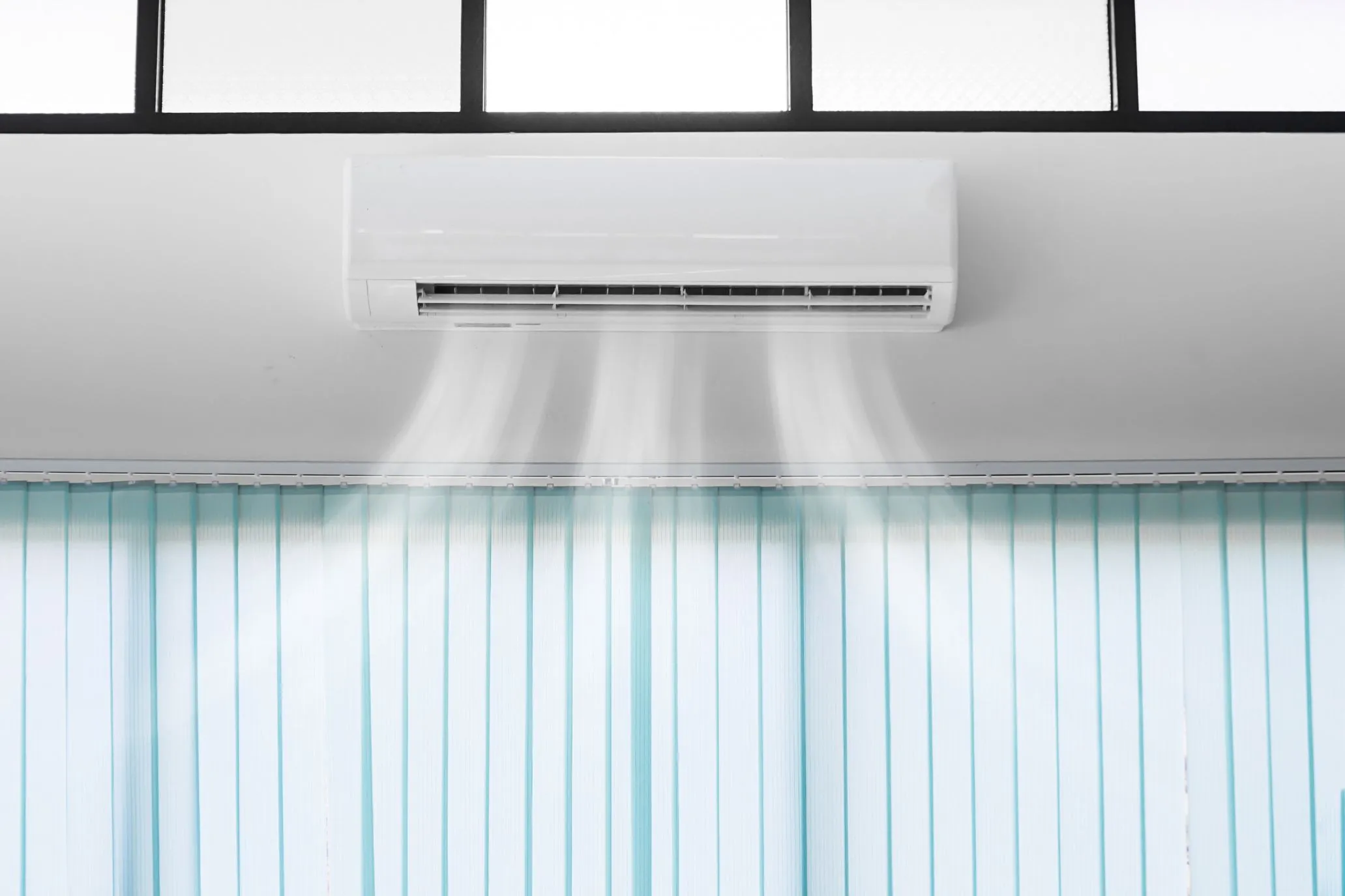
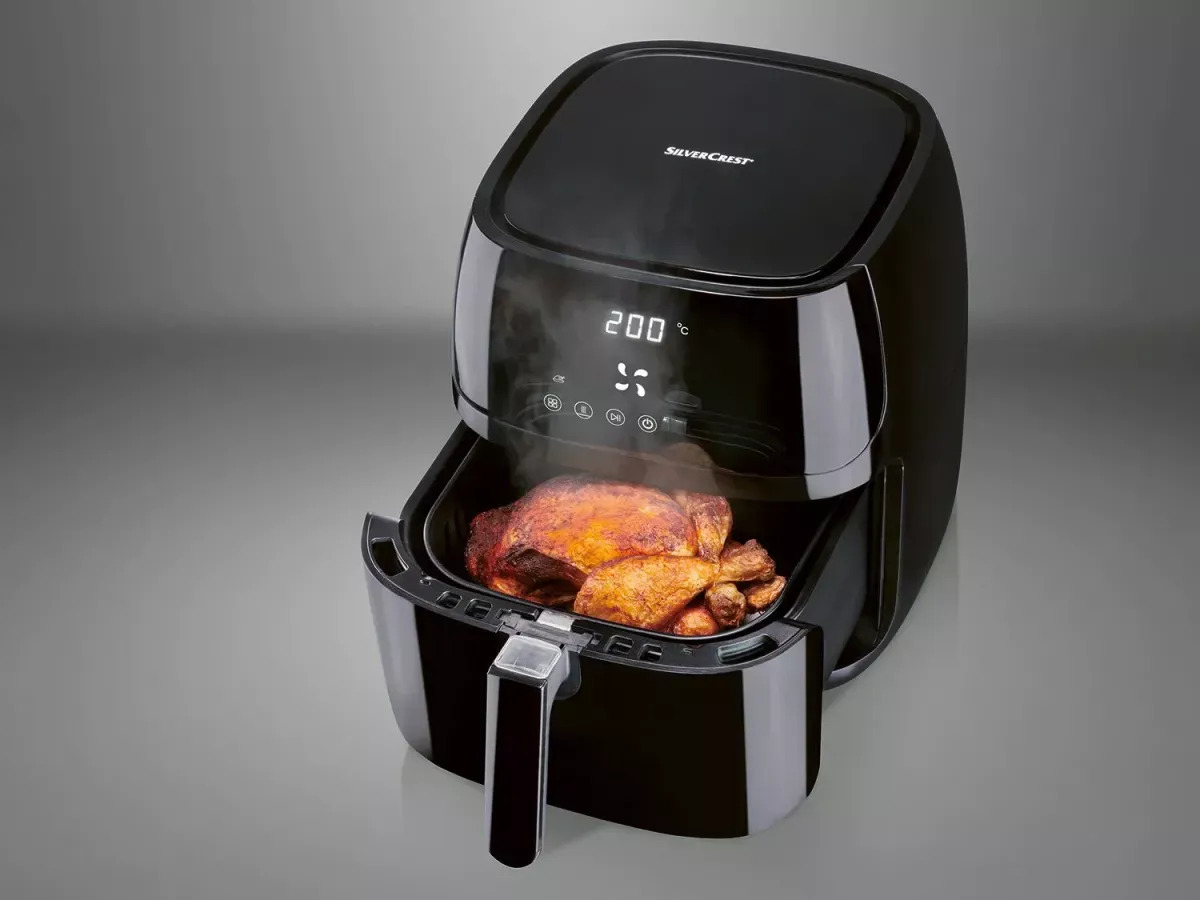
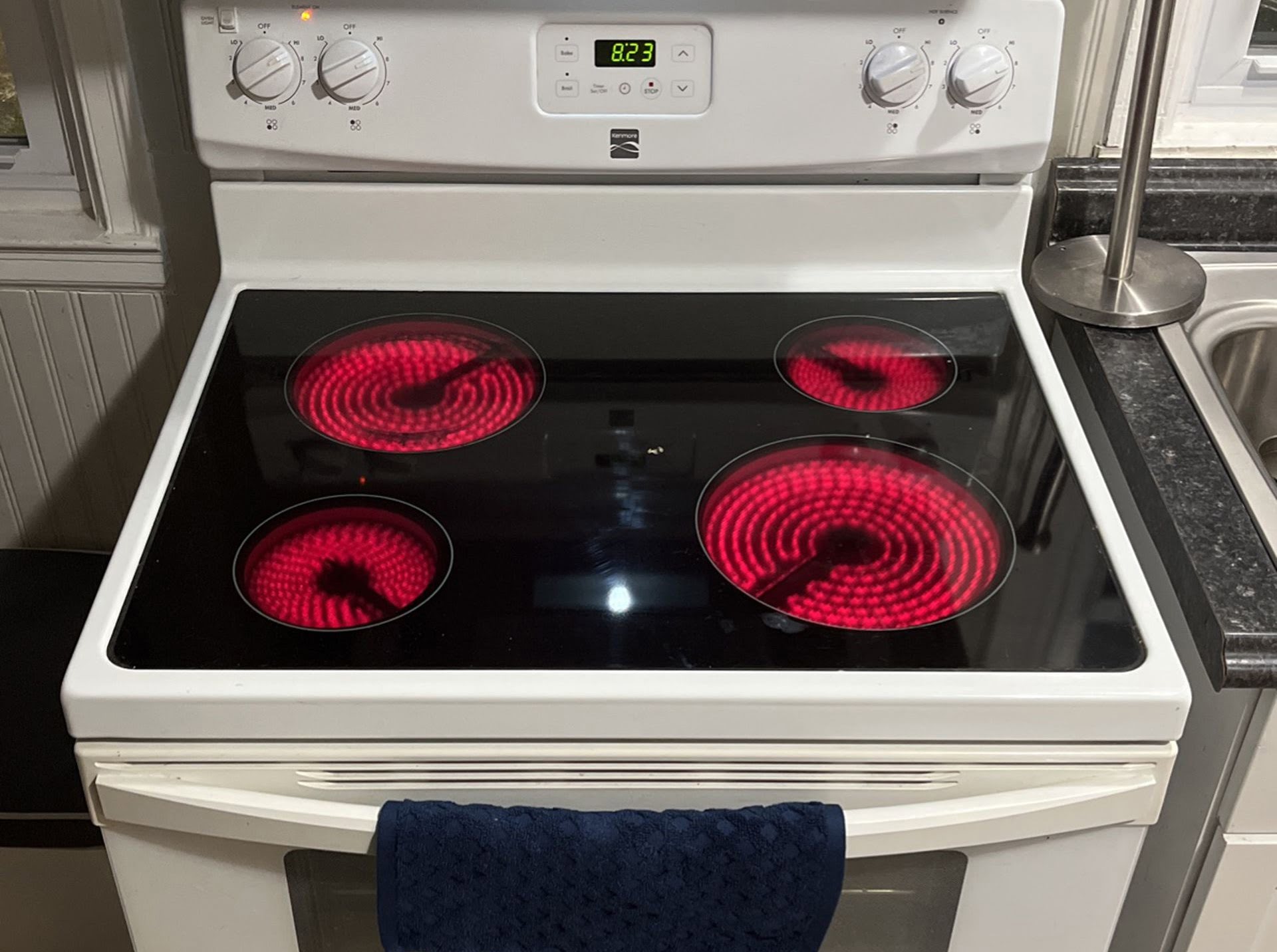
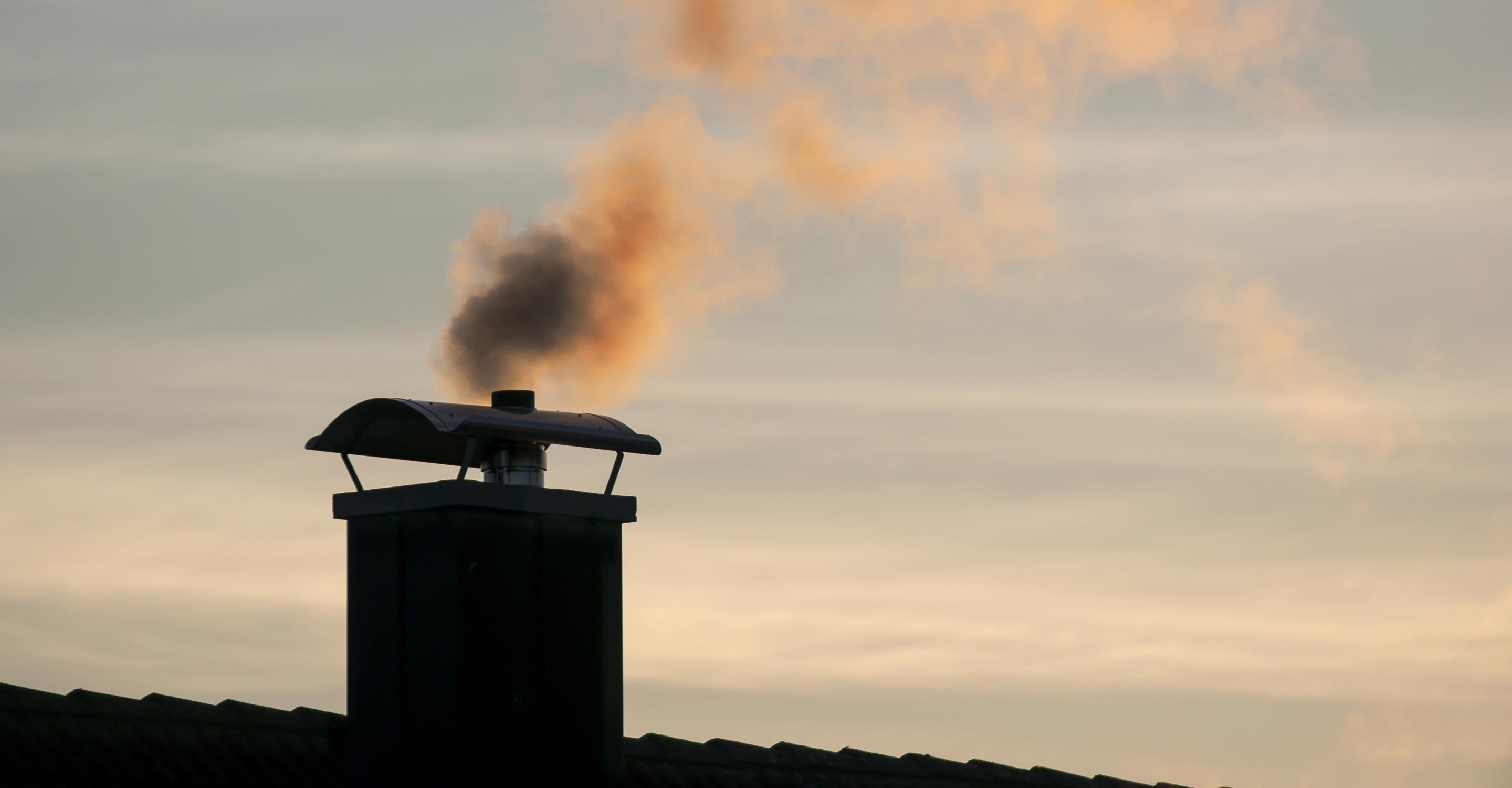
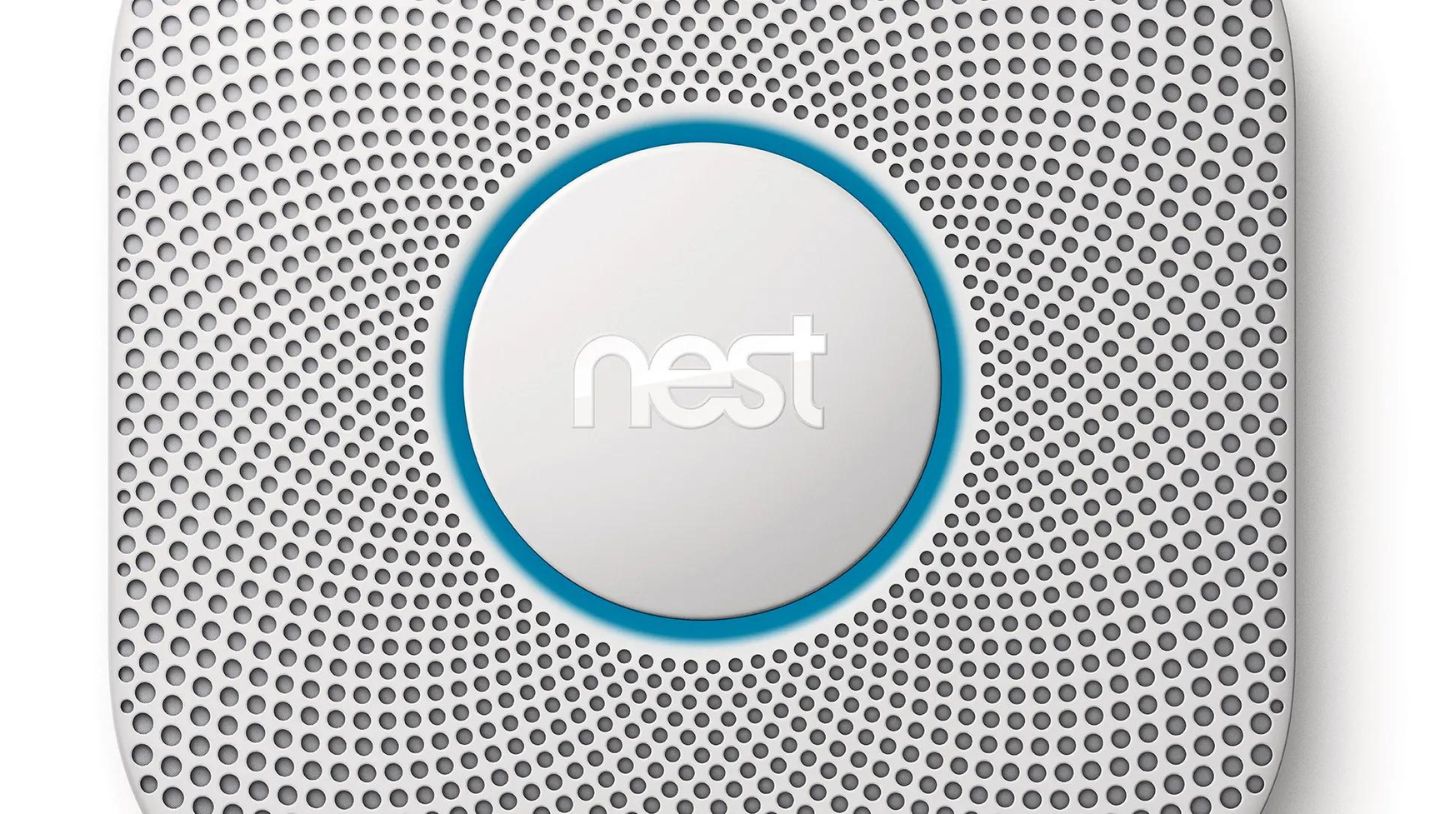
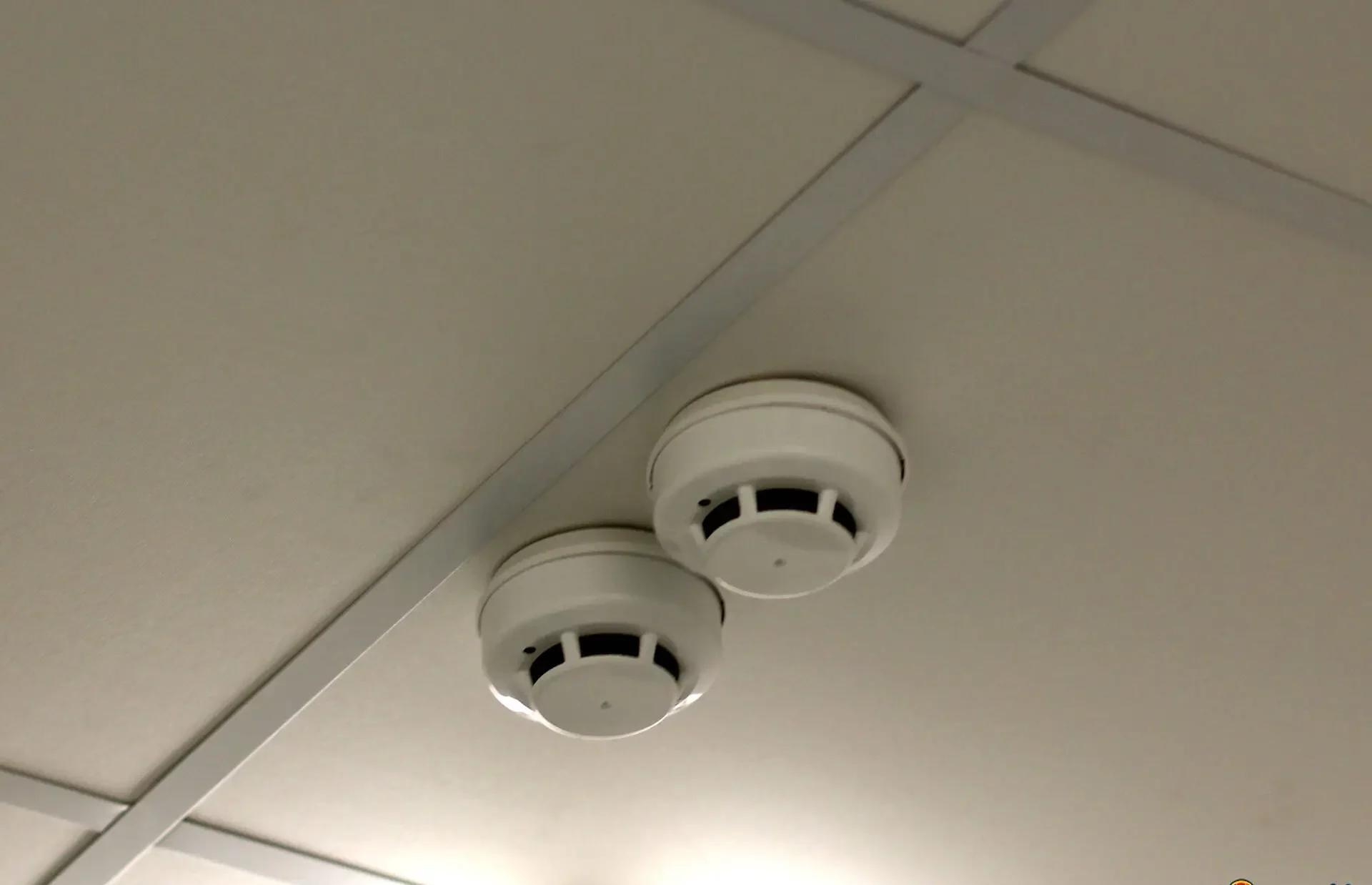

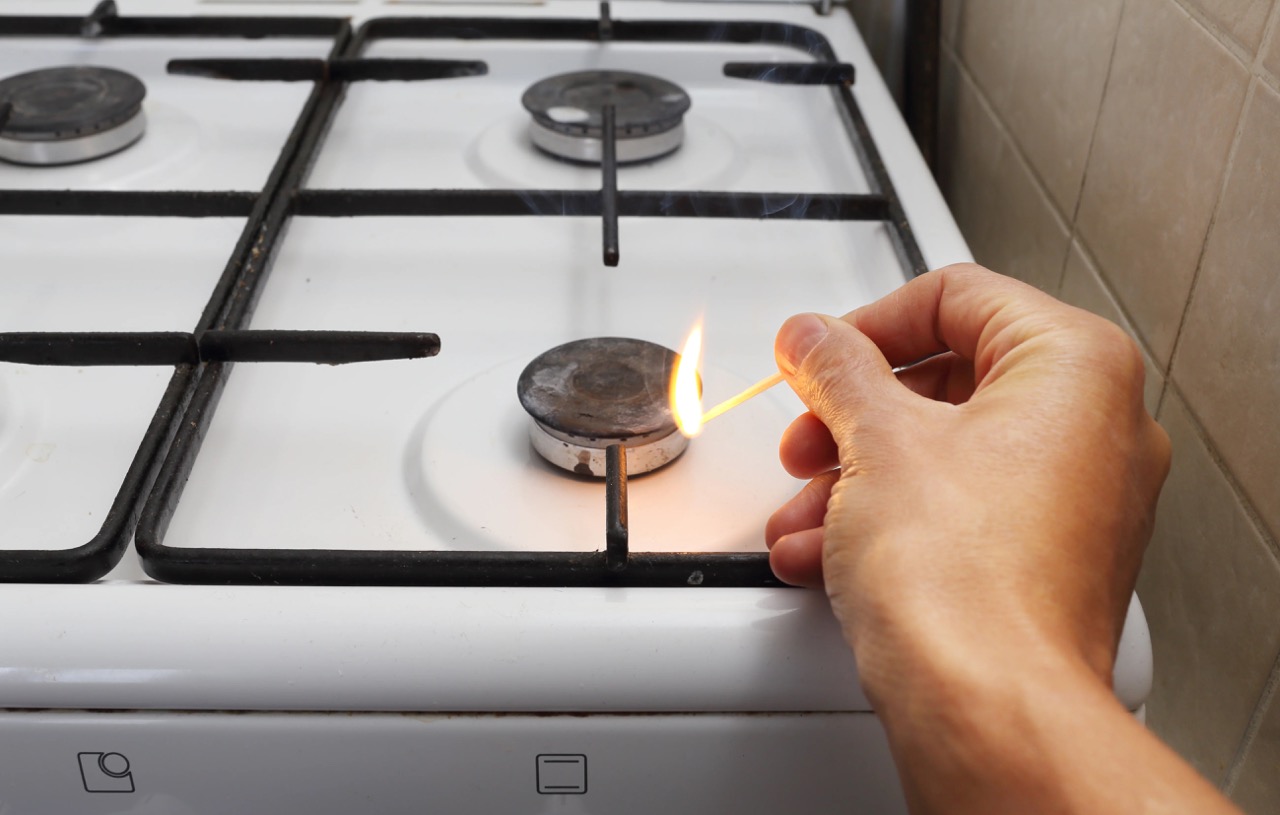
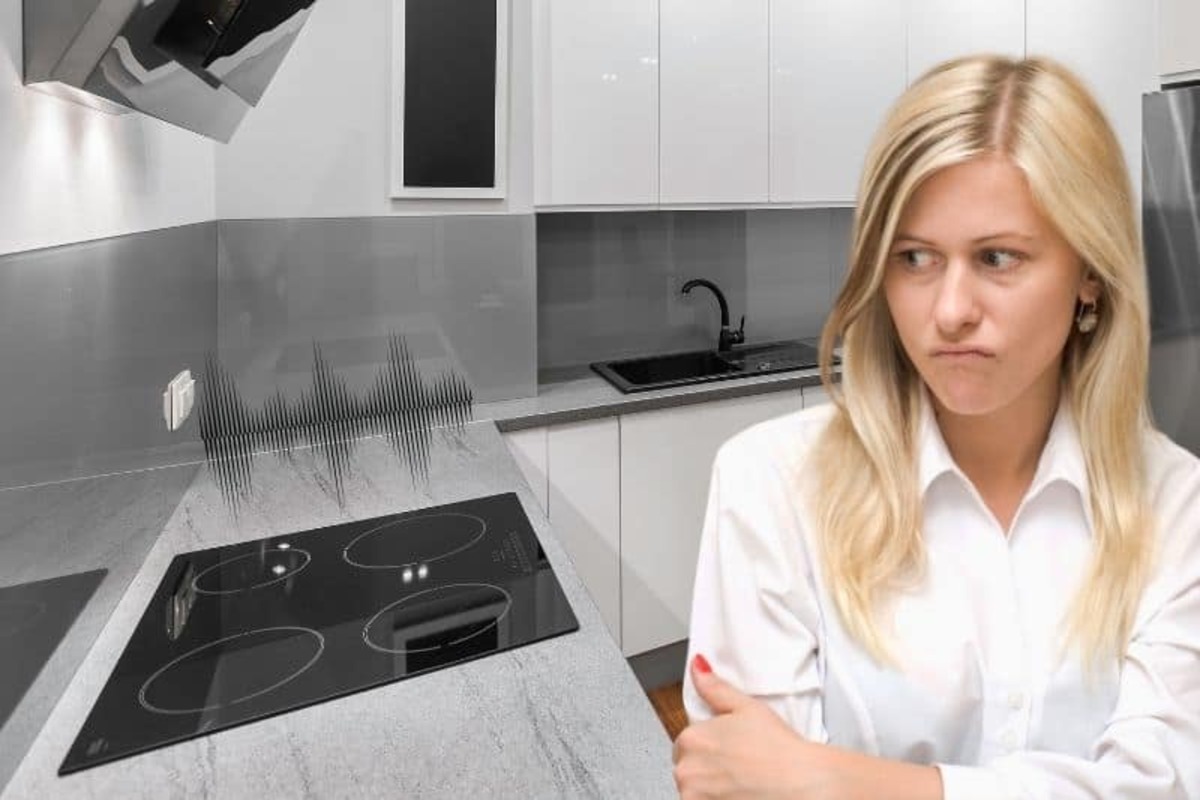
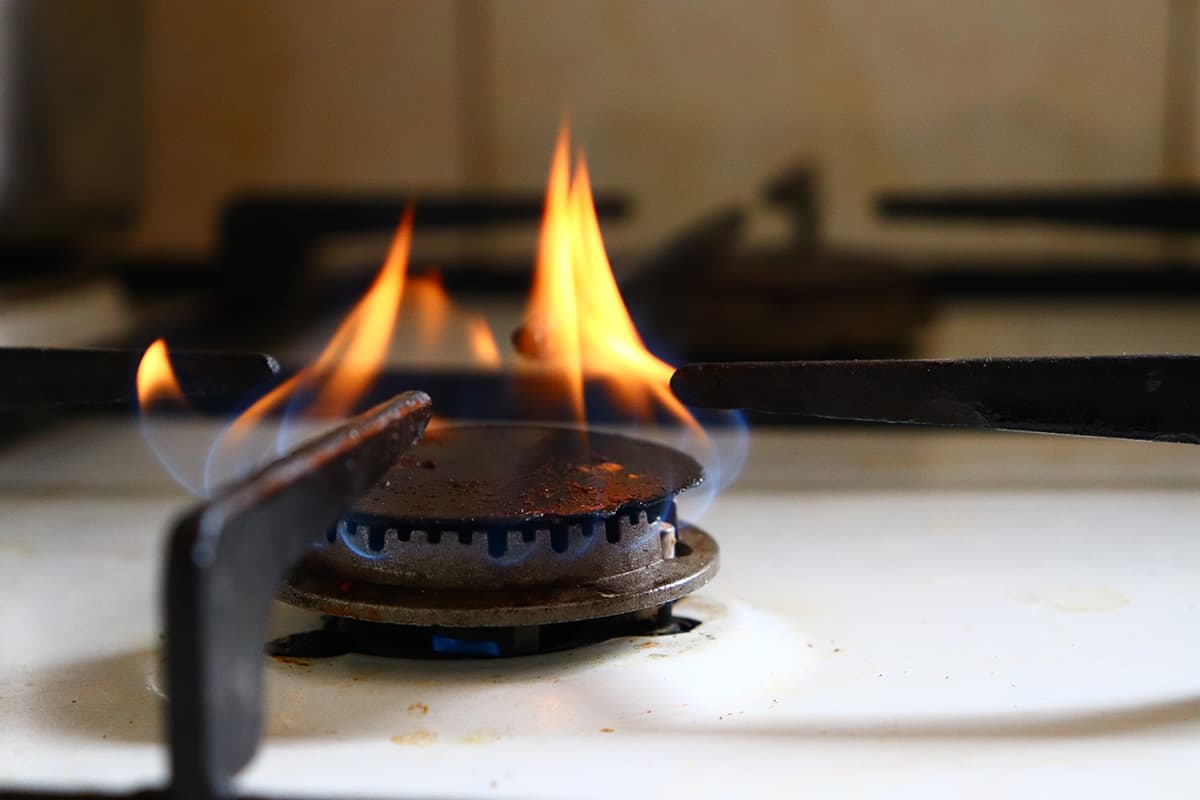
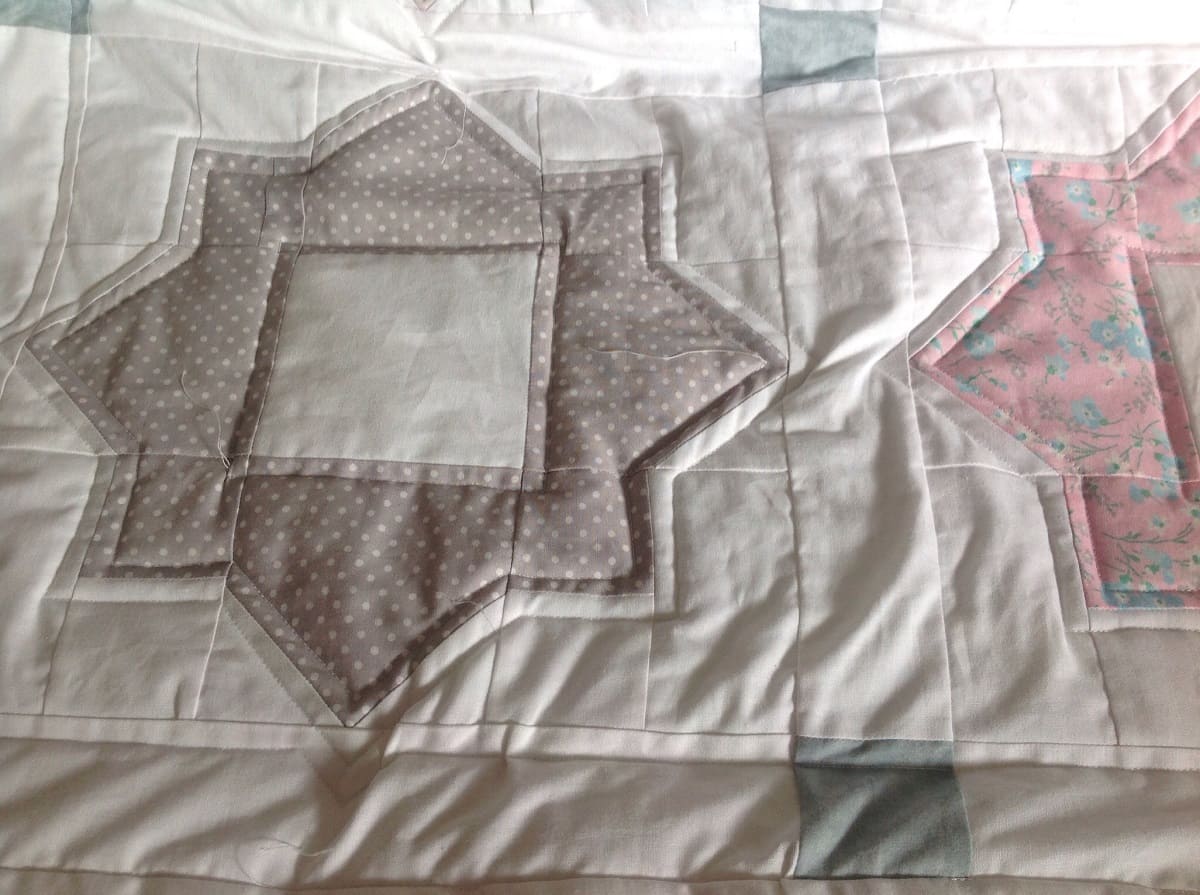
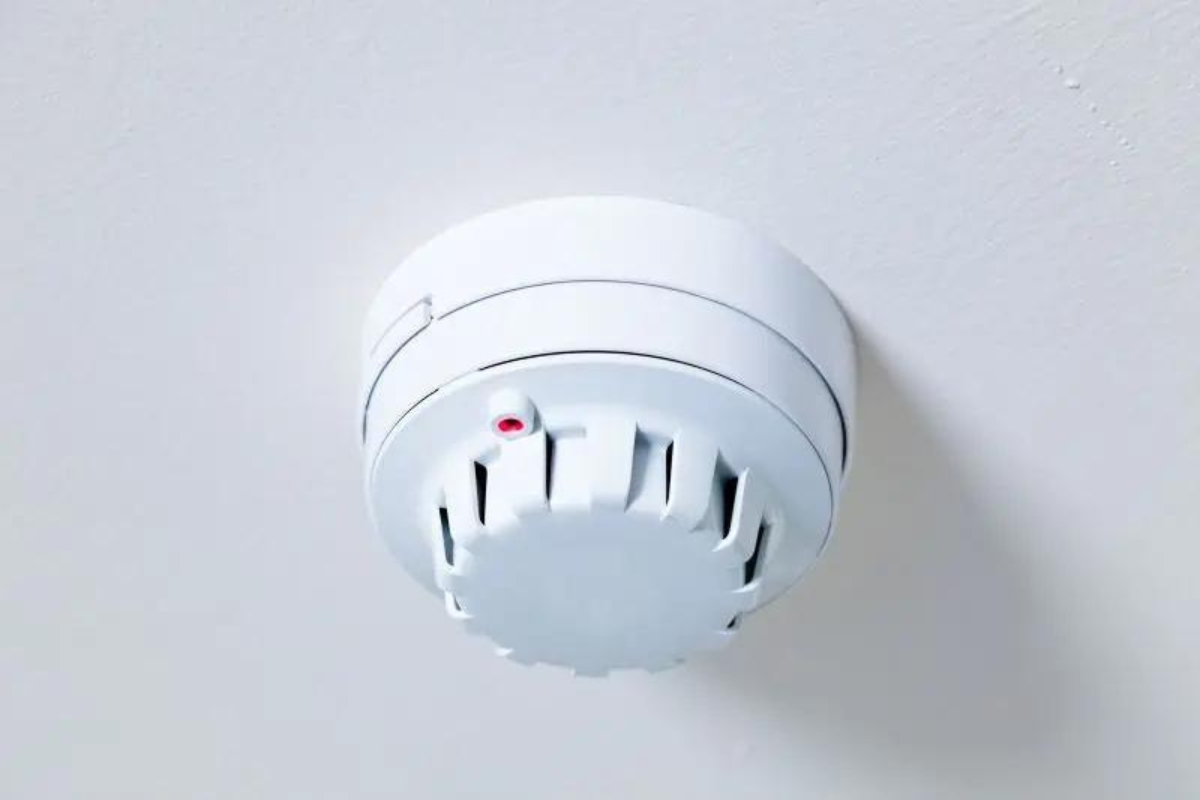

0 thoughts on “Why Is My Stove Top Smoking”